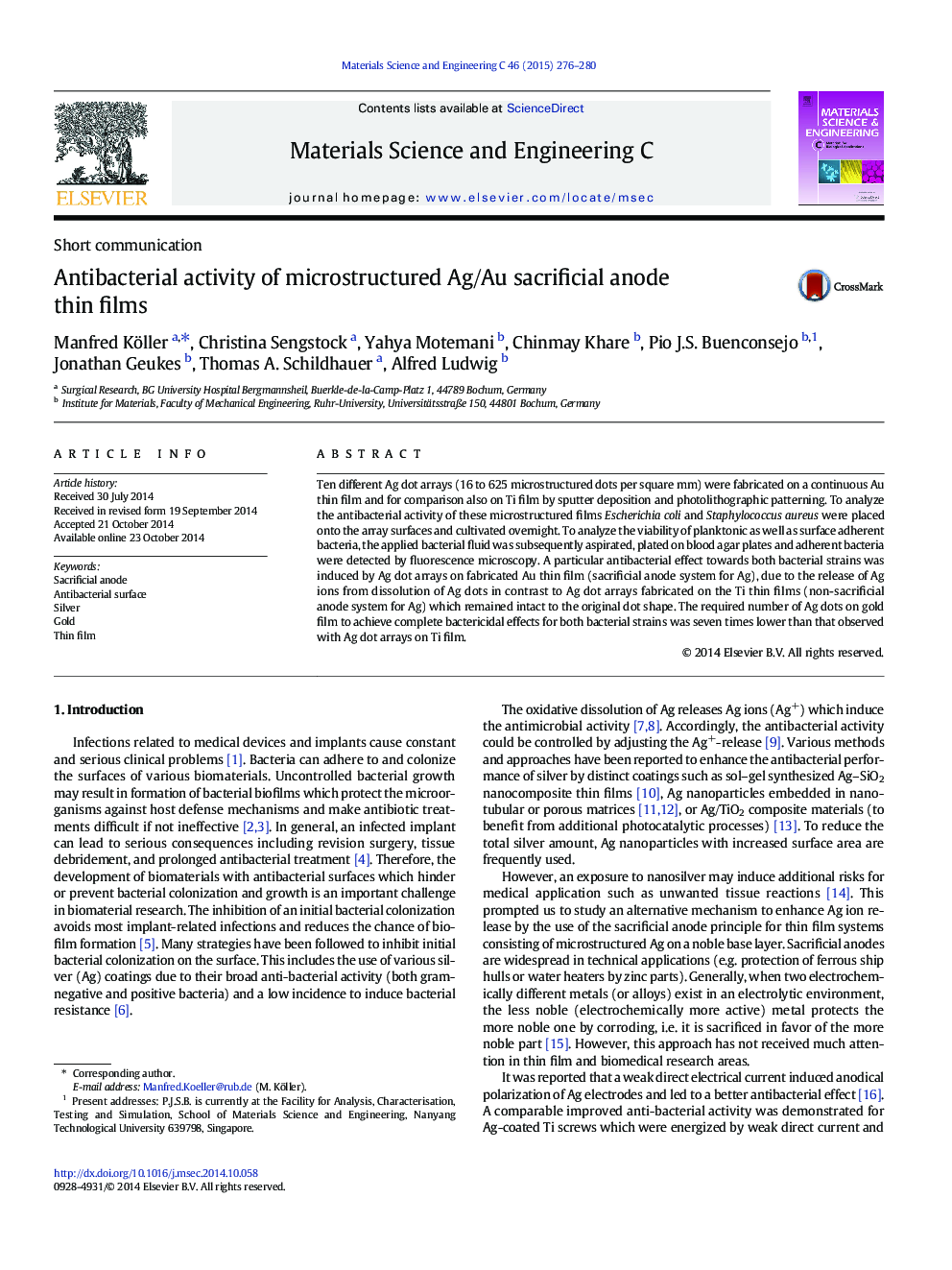| Article ID | Journal | Published Year | Pages | File Type |
|---|---|---|---|---|
| 7869829 | Materials Science and Engineering: C | 2015 | 5 Pages |
Abstract
Ten different Ag dot arrays (16 to 625 microstructured dots per square mm) were fabricated on a continuous Au thin film and for comparison also on Ti film by sputter deposition and photolithographic patterning. To analyze the antibacterial activity of these microstructured films Escherichia coli and Staphylococcus aureus were placed onto the array surfaces and cultivated overnight. To analyze the viability of planktonic as well as surface adherent bacteria, the applied bacterial fluid was subsequently aspirated, plated on blood agar plates and adherent bacteria were detected by fluorescence microscopy. A particular antibacterial effect towards both bacterial strains was induced by Ag dot arrays on fabricated Au thin film (sacrificial anode system for Ag), due to the release of Ag ions from dissolution of Ag dots in contrast to Ag dot arrays fabricated on the Ti thin films (non-sacrificial anode system for Ag) which remained intact to the original dot shape. The required number of Ag dots on gold film to achieve complete bactericidal effects for both bacterial strains was seven times lower than that observed with Ag dot arrays on Ti film.
Related Topics
Physical Sciences and Engineering
Materials Science
Biomaterials
Authors
Manfred Köller, Christina Sengstock, Yahya Motemani, Chinmay Khare, Pio J.S. Buenconsejo, Jonathan Geukes, Thomas A. Schildhauer, Alfred Ludwig,
